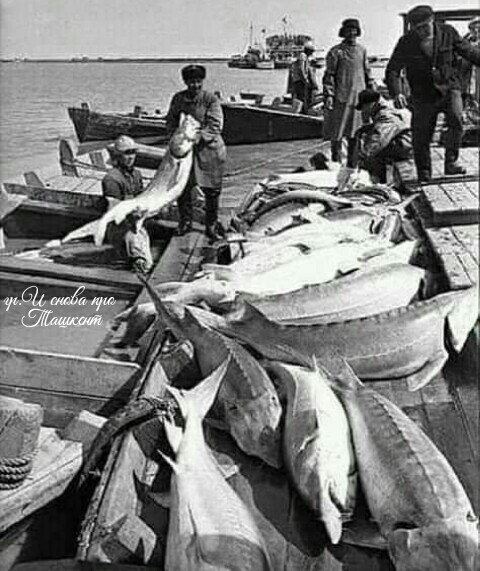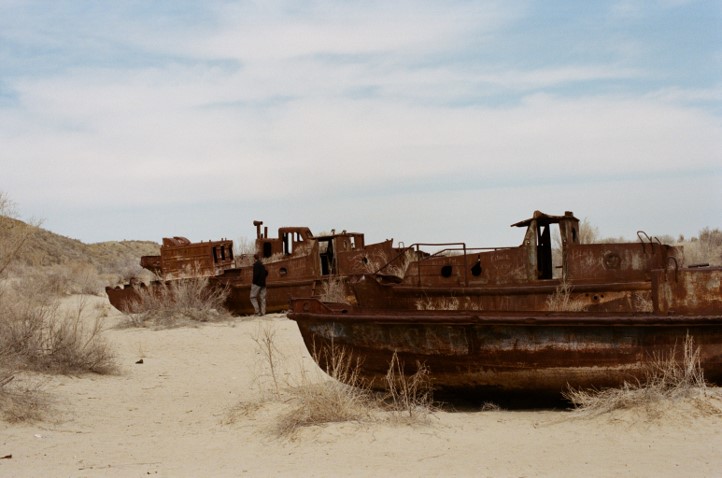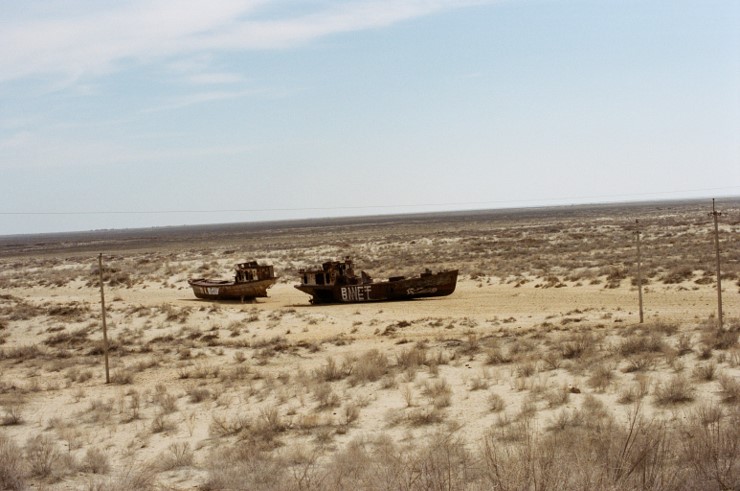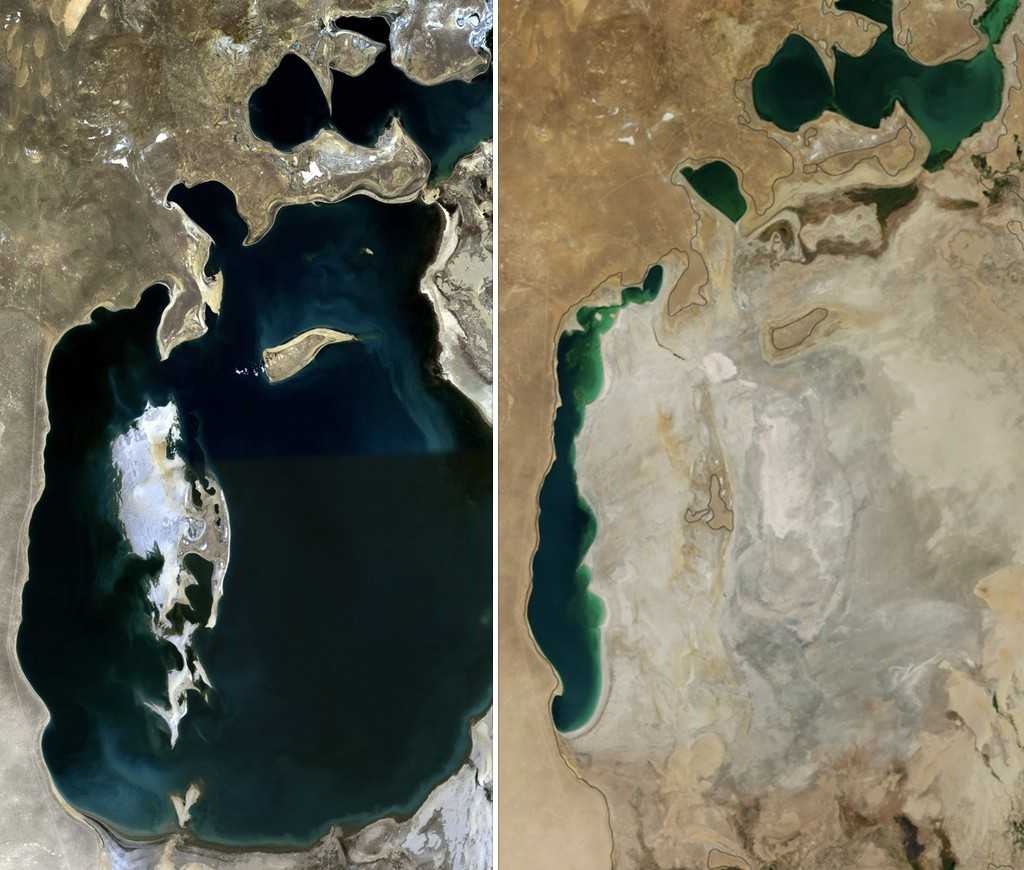How development shaped the shrinking of Aral Sea
This blog has been written by Zumrad Mirzalieva, a second year undergraduate student participating in the Disasters and Development unit module, in the BSc International Disaster Management and Humanitarian Response programme. The blog discusses how development shaped the shrinking of Aral sea.
Debates around development, particularly socio-economic implication of it and disasters are in the forefront of many global discussions. While the issue of disaster risk reduction is evident in the agenda for international development, it can be argued that the same development can cause a number of socio-environmental disasters in the first place. For instance, inadequate development manipulations can lead to the exploitation of natural resources and resource degradation. Rapid industrialisation has proved to generate a vast number of anthropogenic disasters which have modified environmental conditions in different regions. One of the most prominent examples is the disappearance of the Aral Sea, which led to a protracted disaster affecting many aspects of life, caused by heavy agricultural production for the sake of economic development. The Aral Sea, bordered with Kazakhstan and Uzbekistan was once known as one of the largest inland seas in the world, providing many opportunities for the local population, has now become a symbol of a failing agricultural and economic development.
What has actually happened?
Historically, the cotton agriculture existed in the Central Asian region for thousands of years, however, at the turn of the 20th century and with the arrival of Soviet powers, this has transformed into a so-called ‘cotton fever’. Subsequent government plans were heavily focused on the development of cotton production, where it was clear that it is impossible to keep up with the governments demands and quotas without continual exploitation of water resources and expansion of land for these purposes.
How?
With the aim to irrationally expand commodity-based agricultural production, the Soviet government implemented the construction of irrigation canals and dams to ensure water provision for crops. These irrigation canals used the water which was redirected from two main rivers – the Amu Darya and Syr Darya. The vast cotton and wheat fields required enormous amounts of irrigation water. In fact, from 1962 to 2002, they demanded a 60% increase, which contributed to the rapid shrinkage of the Aral Sea.
Consequences
As a result, this environmental catastrophe brought an extensive list of destructions, which are not limited to the environmental implication of it. The intensive agriculture production significantly impacted the health of the population. Caused by the size-change of the sea, the climate of the region is witnessing frequent dust storms and due to heavy salinization of the area and the use of pesticides these salts and toxins are constantly blown back. This, as well as contaminated water inevitably spark airborne diseases, including tuberculosis, cancer and other.
In addition, exhaustive irrigation projects affected the local economy. Throughout many years, the Aral Sea area prospered from a thriving fishing industry. During the Soviet times, the sea was a major part of the countries fishery and acted as a critical regional transportation route, providing many job opportunities for the locals. However, starting from the early 1980’s, the marine life started to disappear due to increased salinity. The decline of the Aral Sea left thousands of people without their main source of income, which was often fishing related. It has been estimated that actually 40,000-60,000 fishermen have lost their means of support, besides, fishing canning factories also stopped their production.

Figure 2: Locals fishing in Moynoq, Karakalpakstan. Photo taken by Vladimir Bautin in 1960’s, exact date unknown. Source: Author’s archives.
Who to blame?
The blame for this crisis certainly lies in the negligence and constant economic and power race of Soviet authorities. Over-dependence on the cotton industry, rapid expansion and development of agriculture and irrigation, as well as poor land and water management can be considered as the key factors contributing to the disappearance of the Aral Sea and the disaster which resulted from it. The Soviet leaders once wanted to transform Central Asia into one of the largest manufacturers of cotton by investing into the development of special irrigation systems. In fact, they have managed to do so for some time – in the 1980’s, Uzbekistan was the leader of the cotton industry and it has become the critical engine of the economy. Meanwhile, authorities ignored the limits imposed by nature and refused to acknowledge the crisis.
Today?
Today, international community as well as local governments and population are actively taking initiatives to salvage the sea. It could be noted that the development focus has shifted from cotton production to the actual restoration of life in the region. This case study set a rather disturbing example of the destructive elements of sudden prosperity and development. It clearly illustrated that at the turn of the 21st century, the health of the ecology should not be sacrificed for the sake of the economic growth as it is certainly closely interconnected. Unfortunately, it is already evident that it is impossible to completely rehabilitate the region, so the least that can be done is to – redirect development paradigms to a more collective, long-term and sustainable path.
It was not necessarily the cotton itself which caused the disaster, it was rather the push for unreasonable agricultural productivity and a complete misuse of land and water. Unfortunately, the Soviet Union considered cotton crops to be more valuable than the whole sea, which was once the basis of the regional economy. Therefore, Soviet authorities in pursuit of establishing a successful cotton industry, destroyed everything in the region, starting from the fishing industry to the climate and health care.
Today, you can visit former coastal settlements and see the long-abandoned wharves, harbours and boats.

Figure 3: Ship Graveyard in Moynoq (a former sea port), Karakalpakstan, April 2018. Source: Author’s own photograph

Figure 4 : Ship Graveyard in Moynoq (a former sea port), Karakalpakstan, April 2018. Source: Author’s own photograph
Reference List:
Djanibekov, N and others, “Pros And Cons Of Cotton Production In Uzbekistan”, in Food Policy For Developing Countries (Ithaca and London: Cornell University Press, 2011), pp. 240-268 <https://ecommons.cornell.edu/handle/1813/55707> [Accessed 14 March 2019].
Glantz, M. and Jamieson, D, “Societal Response To Hurricane Mitch And Intra- Versus Intergenerational Equity Issues: Whose Norms Should Apply?”, Risk Analysis, 20.6 (2000), 869-882 <https://doi.org/10.1111/0272-4332.206080>.
Glantz, Michael H, Creeping Environmental Problems And Sustainable Development In The Aral Sea Basin (Cambridge: Cambridge University Press, 1999), pp.158.
Ilan Kelman, “Introduction To Climate, Disasters And International Development”, Journal Of International Development, 22.2 (2010), 208-217 <https://doi.org/10.1002/jid.1674>.
Japan International Cooperation Agency and the Ministry of Public Utilities, The Study On Water Supply System In Six Cities Of The Aral Sea Region In Uzbekistan (Tokyo Engineering Consultants, 1996)
Micklin, P, “The Future Aral Sea: Hope And Despair”, Environmental Earth Sciences, 75.9 (2016) <https://doi.org/10.1007/s12665-016-5614-5>.
Micklin, P, “The Aral Sea Disaster”, Annual Review Of Earth And Planetary Sciences, 35.1 (2007), 47-72 <https://doi.org/10.1146/annurev.earth.35.031306.140120>.
Micklin, P, “The Water Management Crisis In Soviet Central Asia”, The Carl Beck Papers In Russian And East European Studies, 1991, 131 <https://doi.org/10.5195/cbp.1991.105>.
NASA, Nasa’s Satellite Images Shows Aral Sea Is Nearly Extinct, 2016 <https://www.telegraph.co.uk/news/2016/09/02/nasas-satellite-images-shows-aral-sea-is-nearly-extinct/> [Accessed 18 March 2019].
Shukla, S and Winter, J, “Anthropogenic Forcings On The Climate Of The Aral Sea: A Regional Modeling Perspective”, Anthropocene, 20 (2017), 48-60 <https://doi.org/10.1016/j.ancene.2017.03.003>.
Small, I, Van der Meer, J and Upshur, R E, “Acting On An Environmental Health Disaster: The Case Of The Aral Sea.”, Environmental Health Perspectives, 109.6 (2001), 547-549 <https://doi.org/10.1289/ehp.01109547>.



0 Comments